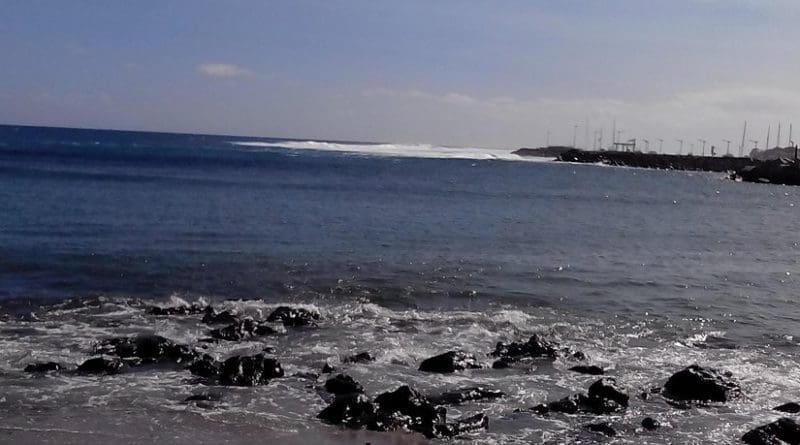India And Blue Economy In The Bay Of Bengal – Analysis
By IPCS
By Vijay Sakhuja*
India’s effort to harness Blue Economy received a boost with the establishment of the International Training Centre for Operational Oceanography (ITCOocean). The Centre will operate under the Indian National Centre for Ocean Information Services (INCOIS) in Hyderabad, known for its expertise in ocean sciences and services, including advisory to society, industry, government agencies and the scientific community through sustained ocean observations.
The ITCOocean would serve as the specialist institution for Operational Oceanography, a field of study relating to systematic and long-term measurements of various changes in the oceans and atmosphere, and undertake interpretation and dissemination of data in the form of ‘now-casts’, ‘forecasts’ and ‘hind-casts’ to a number of stakeholders. The centre is expected to commence work in June 2018 and will train technical and management personnel engaged in various sectors of the Blue Economy such as fisheries, seabed and marine resource development, shipping and ports, coastal tourism, marine environment, coastal management, etc.
The ITCOocean can potentially support the development of Blue Economy in the Bay of Bengal through capacity building in at least five ways. First, it can serve as a regional hub for collation and dissemination of scientific data among the regional science centres and communities. For instance, in Bangladesh, the National Oceanographic and Maritime Institute (NOAMI), Bangladesh Oceanographic Research Institute (BORI) and National Oceanographic Research Institute (NORI) can be part of the ITCOocean network for Bay of Bengal Blue Economy initiatives.
Second, Blue Economy is data-intensive which is a function of the collection of observations generated through satellites, research vessels, sea-based sensors including those embedded in the ocean floor, and weather modelling. These systems, devices and processes generate tens of terabytes of data and require technology and expertise to interpret it for operational uses. Further, oceanographers and scientists operate with diverse data types obtained bya variety of national technical means and methodologies. At ITCOocean, an oceanographic data bank for use by the regional scientific community can support regional initiatives to study and harness the oceans in a sustainable manner.
Third is human resources training in oceanography and creating a gene pool of professions to support national Blue Economy programmes in regional countries. India has an excellent track record of training scientists, and in the last few years, besides training scientists for their own needs, the INCOIS faculty has trained 105 scientists from 34 other countries in various aspects of operational oceanography.
Fourth is supporting innovation for ocean-related disruptive technologies which are transforming modern day operational oceanography. Big data, artificial intelligence, augmented reality/virtual reality, blockchain technology and additive manufacturing commonly known as ‘3D printing’ are mushrooming and driving innovation to augment operational oceanography. For instance, 3D printing technologies support real-life applications in oceanography through hydrodynamics, biomechanics, locomotion and tracking and surface studies. Another significant use of 3D printing is in preparing coral reef replicas and thereafter seeding coral to restore damaged reefs.
Fifth, ITCOocean is also an important diplomatic tool for science diplomacy. The Indian government has promoted Blue Economy in multilateral forums at regional and sub-regional levels such as the Indian Ocean Rim Association (IORA) and the Bay of Bengal Initiative for Multi-Sectoral Technical and Economic Cooperation (BIMSTEC). As far as the latter is concerned, the 15th BIMSTEC Ministerial Meeting’s joint statement notes that member countries agreed to constitute a Working Group to develop Blue Economy. In that spirit, Bangladesh hosted an international conference in October 2017, where it was noted that the lack of scientific marine knowledge and technology could be the Achilles Heel of Blue Economy development in the Bay of Bengal.
It is fair to argue that Bangladesh has been most proactive among the Bay of Bengal littorals to develop Blue Economy. Planning Minister AHM Mustafa Kamal has stated that Bangladesh will have to ensure 5 per cent contribution of Blue Economy to the GDP to achieve the targeted 8 per cent economic growth in 2019, 9 per cent in 2025, and 10 per cent in 2030.
Bangladesh merits a leadership role for the development of Blue Economy in the Bay of Bengal; however, it is constrained by a number of factors that potentially inhibit this a mandate given that it is yet to develop advanced technological skills to study the oceans. To address this critical gap, the Bangladesh government has decided to acquire a modern survey ship in 2018. In this context, India is well-placed to support Bangladesh to develop scientific capacities, including training for oceanographic research. Additionally, ITCOocean is an important institution to support Bangladesh’s needs of operational oceanography.
Bangladesh has established scientific technical collaboration with Norway through the Nansen-Bangladesh International Centre for Coastal, Ocean and Climate Studies (NABIC); likewise, ITCOocean has tied up with Norway’s Nansen Scientific Society and the Research Council to collaborate in teaching and research. It will be useful to pool resources to augment cooperation among the Bay of Bengal littorals and bring together regional initiatives under one roof.
Although ITCOocean is well-positioned to support high-end Operational Oceanography, there would also be a critical need to establish vocational institutions to promote, train and skill workers that are adept at understanding the oceans and working in industries that support Blue Economy.
* Vijay Sakhuja
Former Director, National Maritime Foundation (NMF), New Delhi

